
Introduction: After the Winter war ended, the 1940 treaty of Moskow allocated to USSR surrounding islands, several coastal artillery sites, harbor facilities and a large area suitable for an airfield, which they built quickly. Irritated by the numerous troop transports from USSR Finland soon accepted German transit in Northern Finland.
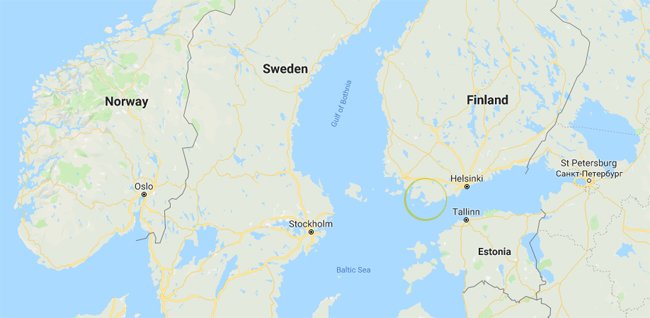
This weighted much to precipitate the continuation war in June 1941. The peninsula was the southernmost point of Finland with sandy moraines, pine and low shrubs, a popular archipelago with long sandy beaches popular before the war. This area saw the Battle of Gangut in 1714 and the construction of Peter the Great naval fortress. The leasing for 30 years to Soviet forces as a naval base was a nail in Finnish boot, the harbringer of war.
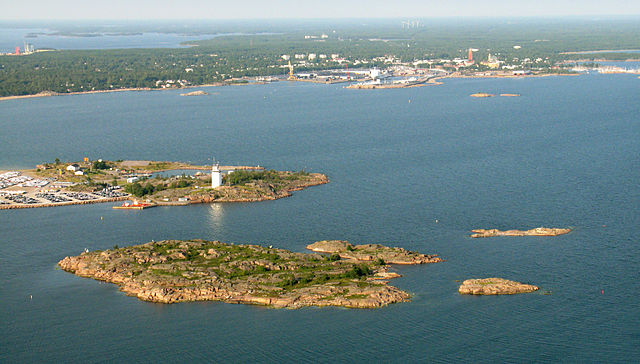
WW2 Combined operations in the Baltic
The Finno-Soviet winter was is probably the most famous clash of 1939 by its intensity after Poland has been defeated; A massive Soviet offensive was famously pinned down and took heavy casualties due to poor tactics, incompetent and inexperienced command, and a brave and clever defence by the Finns, making due with very little. This epic David vs Goliath struggle eventually settled with the 1940 Moscow Peace Treaty which fixed frontiers. This was the end of the dreadful “winter war”, showing the world and Stalin the total unpreparedness of the Soviet Army after the late 1930s purges. Perhaps this also gave the extra confidence boost to Hitler’s generals to undertook Operation Barbarossa.
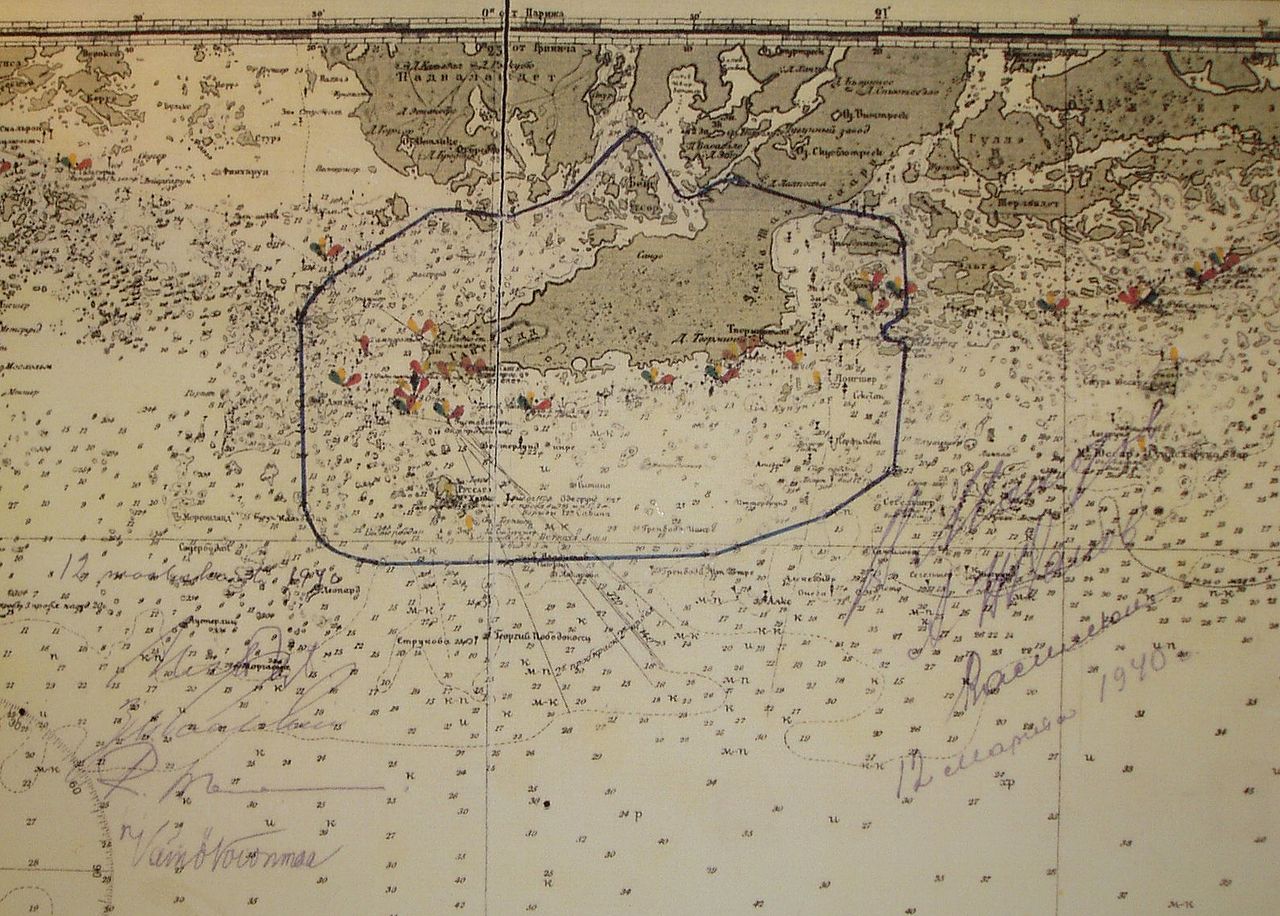
Map of the Hanko peninsula and archipelago
The end result of this was the Continuation war, when the Finns took offensive again with the full support this time of German units on the northern sector of a gigantic offensive, stretching from the arctic circle to the black sea. On the first line was this area which controlled access to Russian ports of the Baltic from Finland. In the subsequent operations, the first of the continuation war, land, air and naval battle with landings from both sides secured a Finnish victory.
Soviet Forces comprised essentially garrison troops, with a small Marine detachment, around 25,300-30,000 in all, whereas the Finns comprised 22,000 men by July 1941. Despite Mannerheim orders to take the Island, local Finnish troops just joined the Harparskog line they had prepared during the interim peace, manning the trenches and preparing artillery.
Land Operations
For weeks, Both sides remained quiet, but there were artillery strikes and quick probing by small groups of the Russian defence. Indeed, the Finns did not receive authorization to attack the base. However the rapid German advance on the southern shore of the Gulf of Finland rendered the capture of the archipelago less strategically sound. Pressure augmented on Soviet Baltic Fleet. Fearing to be surrounded, Moskow gave the order in the autumn of 1941 to evacuate the base. In December the last troops and their equipments had left the base. Heavy equipments were sabotages and loaded with explosives.
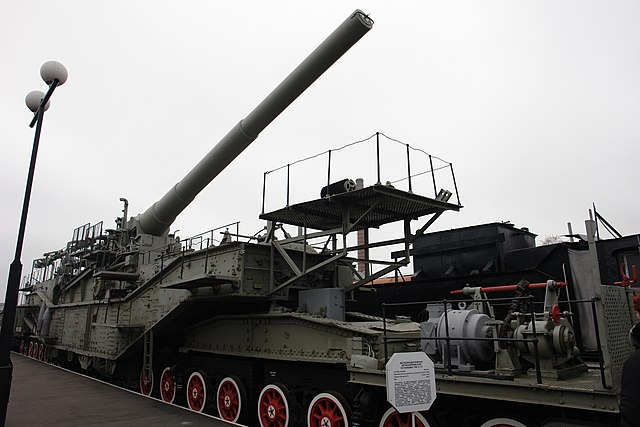
Soviet Railway artillery TM-3-12 (preserved) which took part in the defence of Hanko.
Naval Operations
Early on, the Finns landed small groups, trying to surround the Soviets with the 17th Division and 4th Coastal Brigade. The first was latter transported to East Karelia. However Finnish efforts proved fruitless. Finnish submarines blockaded the area, firing torpedoes on soviet shipping in several occasion, but most torpedoes proved defective. The Minefields laid on shipping lanes were however more successful, sinking several Soviet supply vessels. Finnish landings from July to October were successful, using small fast wooden boats, but the small scale of the Islands meant the fight was harsh and brutal, they claimed the most of casualties on both sides, especially when re-embarking.
Naval Forces in the Baltic
At the start of the campaign, the German Kriegsmarine could commit in the area 28 Schnellboote, 5 Ubootes, ten minelayers (some converted), two squadrons of R-boote and two of patrol trawlers, three Sperrbrecher and two depot ships for minesweepers as well as many auxiliaries. In September 1941 they would create the Baltenflotte (Tirpitz, 6 cruiser, 3 destroyers, 6 TBs). Their task was to keep at bay the Red Banner squadron.
The Finnish Navy was also a substantial coastal fleet, but like the Germans, the shallow waters around Hankö prevented the use of heavy ships. However they could deploy four sloops (Turunmaa, Karjala, Uusimaa and Hämeenmaa), Three minelayers, twelve minesweepers and Seven motor torpedo boats.
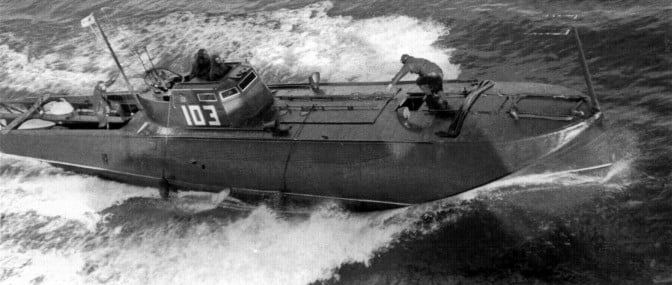
Soviet sh-4 motor torpedo boat. They could intervene in these shallow waters but were penalized by their short range.
On the Soviet side, the Red Banner Baltic Fleet was easily the largest naval power in the Baltic Sea, with two Gangut class BBs and two Kirov class cruisers, 26 destroyers and 65 submersibles. However the area around Hankö limited operations to small crafts and light ships: For the Soviet Forces could muster seven escort gunboats, 39 minesweepers/minelayers and 48 MTBs, which were the most often deployed.
The occupation and annexation of the Baltic states by the Soviet Union in 1940 allowed to use these much-needed ports near to the front. They took an heavy toll after the invasion when evacuating: The Kriegsmarine indeed laid mines several hours before the start of Operation Barbarossa. As a result, the Soviet Baltic Fleet lost a destroyer the next day. After a rapid German advance the evacuation towards Tallinn and Kronstadt was a sever operational blow.
The landings of Bengtskär
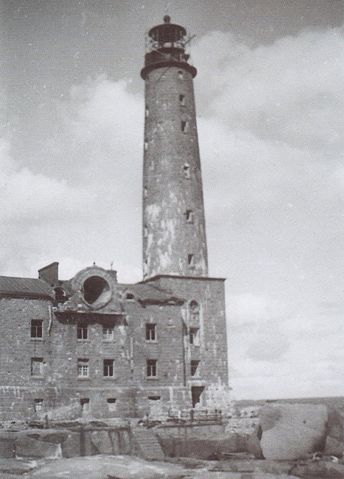 In July 1941, having Hankö threatened of a siege, Soviet forces launched amphibious operation of the small island of Morgonlandet. This was a step prior a larger, more interesting island on the strategic side, Bengtskär. The latter indeed had a lighthouse and observation post. Soviet forces choose to attack and night and awaited foggy conditions to do so.
In July 1941, having Hankö threatened of a siege, Soviet forces launched amphibious operation of the small island of Morgonlandet. This was a step prior a larger, more interesting island on the strategic side, Bengtskär. The latter indeed had a lighthouse and observation post. Soviet forces choose to attack and night and awaited foggy conditions to do so.
The Finnish watch troops believed at first they heard German minesweepers. Soviet naval forces comprised four MO-class patrol boats, and another 6 boats which later joined in at a latter part of the fight when it was clear the Soviet attempt has failed. Their objective was to put demolition charges and blast the lighthouse with a landing party of about 31-100 men. These men did not had any commando training, which perhaps explained the failure.
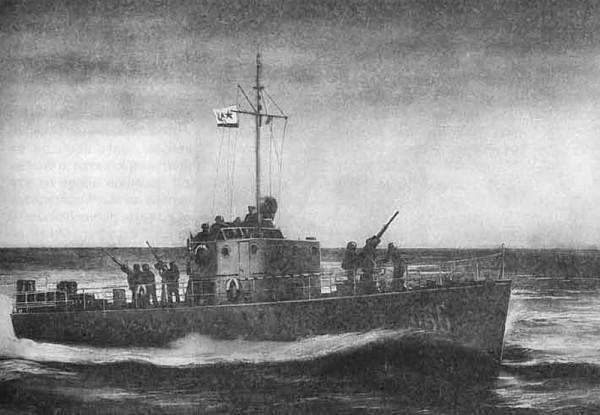
MO class patrol boats. They were used to transport troops and one was sunk by Uusimaa after a short gunfight, BK-238.
However soon Finnish watchout took the measure of the assault and put up a fierce resistance. Under Lieutenant Fred Luther the 41 men garrison managed to hold the lighthouse and nearby installations, summoning the use of coastal artillery support throughout the fight. Naval Forces also intervened and later escorted Finnish ships bringing much needed reinforcements. The remaining Soviet forces (13) were encircled and surrendered but some committed suicide with grenades.
Later at noon, Finnish naval forced repelled what was left of local Soviet naval forces. 16 sailors were also captured from the sunken BK-238. Soviets losses were estimated between 31 and 60 killed, while Finnish losses amounting 31 killed, 45 wounded with addition of sailors and night time reinforcements.
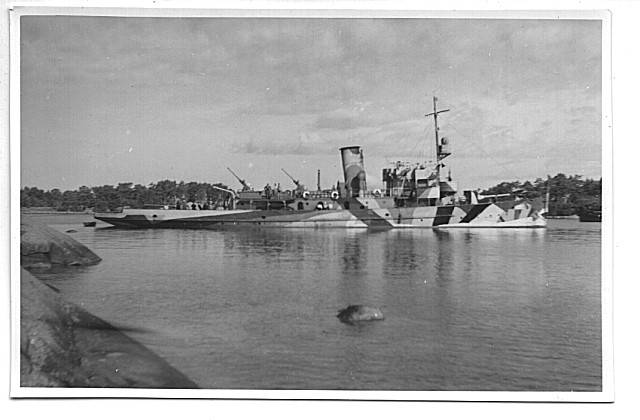
Uusimaa (or Hämeenmaa on this photo), which engaged and sank the BK-238. This was the only naval duel of the campaign.
Aftermath
Losses at sea also jumped during the evacuation. In total, the Finns lost 961 men, 297 killed, 604 wounded and 78 missing while the Soviet Forces lost more, 797 killed and 1,476 wounded on land, but much more during the naval evacuation. In total, Soviet 23,000 troops were repatriated back to Leningrad. But they had to go through extensive Finnish minefields and lost 3 destroyers and 2 large transports* in the process during the several month campaign from summer to winter. They also laid mines in turn, which the Finns discovered at their arrival. The closest loss to Hankö was the destroyer Sorovyi/Surovyi in 13 November 1941. Other mines barrages claiming destroyers were the ‘Corbetha’ minefield near Naisaari (claiming three), ‘Apolda’ mine barrage (Oleg Bank), and the ‘Juminda’ barrage.
Consequences: The takeover of Hankö allowed the Axis to retain full control of the Finnish southern sector. It was the gateway to the gulf of Finland, one of the most heavily mined maritime area of all times. On the other end was Leningrad and the Baltic fleet. The southern coast was of course taken in charge by Herresgruppe Nord (Army Group North). After the loses of the naval bases at Riga and Liepāja, this was the turn of Tallinn (27 August), and through aerial supremacy, the Luftwaffe was soon able to cripple completely the Red banner squadron and the Kriegsmarine’ Baltenflotte was soon scattered and re-affected in Norway.
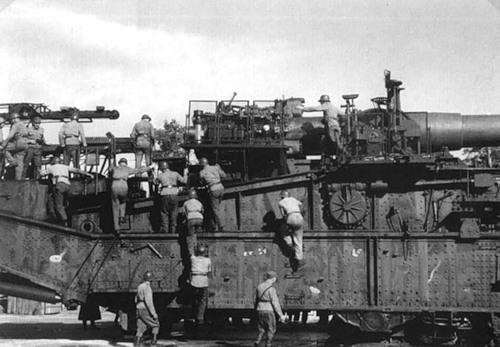
Finnish veay artillery at Hankö src
The Finns would be able to launch offensives during the winter(Battle of Suursaari), until April 1942, followed by the Battle of Someri (8–10 July 1942), another Finnish victory, sinking 16 Soviet patrol and motor torpedo boats, and the Battle of Sukho Island (22 October 1942) a German landing attempt of an island on the Lake Lagoda (which ended in failure for the axis).
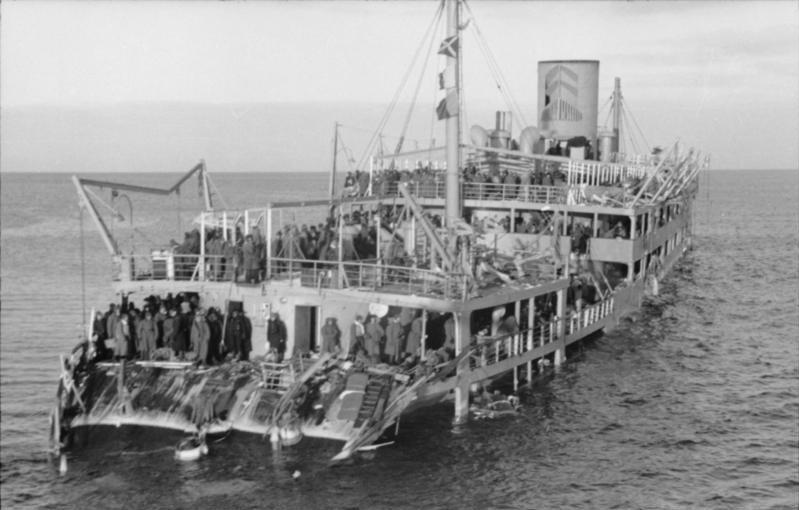
The transport Iosif Stalin, after hitting a mine on 3 December 1941. She lost the stern but still could float. She was later captured, repaired and reused by the Germans.
Read More/src
Stalin’s ocean-going fleet (book)
Battle of Bengtskar – archive
mines warfare in the gulf of finland (archive)
The Baltic sea campaign on Felgrau.com (archive)
Mannerheim, G (1952). Mannerheim, muistelmat, toinen osa.
Aromaa, Jari (11 July 2007). “Finnish Navy in World War II
Kijanen, Kalervo (1968). Suomen Laivasto 1918–1968
https://en.wikipedia.org/wiki/Continuation_War
https://en.wikipedia.org/wiki/Battle_of_Hanko_(1941)
http://janfast.blogspot.com/2019/04/documenting-ww2-heritage-in-hanko-s.html
http://hangonsotahistoria.fi/index.php/en/historia-4/pa-1900-talet-2/
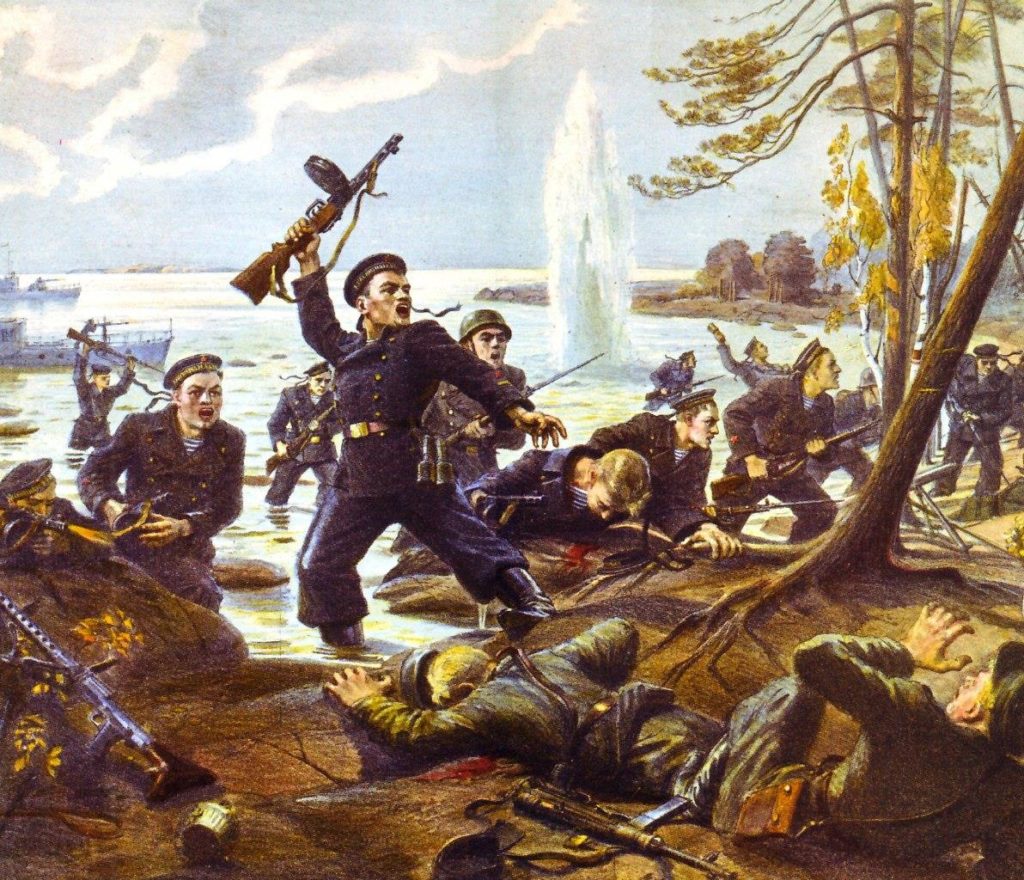
Dramatic depiction of Soviet marines landings during the battle, probably Bengtskärin lighthouse. Unknown origin.

 Latest Facebook Entry -
Latest Facebook Entry -  X(Tweeter) Naval Encyclopedia's deck archive
X(Tweeter) Naval Encyclopedia's deck archive Instagram (@navalencyc)
Instagram (@navalencyc)





 French Navy
French Navy Royal Navy
Royal Navy Russian Navy
Russian Navy Armada Espanola
Armada Espanola Austrian Navy
Austrian Navy K.u.K. Kriegsmarine
K.u.K. Kriegsmarine Dansk Marine
Dansk Marine Nautiko Hellenon
Nautiko Hellenon Koninklije Marine 1870
Koninklije Marine 1870 Marinha do Brasil
Marinha do Brasil Osmanlı Donanması
Osmanlı Donanması Marina Do Peru
Marina Do Peru Marinha do Portugal
Marinha do Portugal Regia Marina 1870
Regia Marina 1870 Nihhon Kaigun 1870
Nihhon Kaigun 1870 Preußische Marine 1870
Preußische Marine 1870 Russkiy Flot 1870
Russkiy Flot 1870 Svenska marinen
Svenska marinen Søværnet
Søværnet Union Navy
Union Navy Confederate Navy
Confederate Navy Armada de Argentina
Armada de Argentina Imperial Chinese Navy
Imperial Chinese Navy Marinha do Portugal
Marinha do Portugal Mexico
Mexico Kaiserliche Marine
Kaiserliche Marine 1898 US Navy
1898 US Navy Sovietskiy Flot
Sovietskiy Flot Royal Canadian Navy
Royal Canadian Navy Royal Australian Navy
Royal Australian Navy RNZN Fleet
RNZN Fleet Chinese Navy 1937
Chinese Navy 1937 Kriegsmarine
Kriegsmarine Chilean Navy
Chilean Navy Danish Navy
Danish Navy Finnish Navy
Finnish Navy Hellenic Navy
Hellenic Navy Polish Navy
Polish Navy Romanian Navy
Romanian Navy Turkish Navy
Turkish Navy Royal Yugoslav Navy
Royal Yugoslav Navy Royal Thai Navy
Royal Thai Navy Minor Navies
Minor Navies Albania
Albania Austria
Austria Belgium
Belgium Columbia
Columbia Costa Rica
Costa Rica Cuba
Cuba Czechoslovakia
Czechoslovakia Dominican Republic
Dominican Republic Haiti
Haiti Hungary
Hungary Honduras
Honduras Estonia
Estonia Iceland
Iceland Eire
Eire Equador
Equador Iran
Iran Iraq
Iraq Latvia
Latvia Liberia
Liberia Lithuania
Lithuania Mandchukuo
Mandchukuo Morocco
Morocco Nicaragua
Nicaragua Persia
Persia San Salvador
San Salvador Sarawak
Sarawak Uruguay
Uruguay Venezuela
Venezuela Zanzibar
Zanzibar Warsaw Pact Navies
Warsaw Pact Navies Bulgaria
Bulgaria Hungary
Hungary

 Bundesmarine
Bundesmarine Dutch Navy
Dutch Navy Hellenic Navy
Hellenic Navy Marina Militare
Marina Militare Yugoslav Navy
Yugoslav Navy Chinese Navy
Chinese Navy Indian Navy
Indian Navy Indonesian Navy
Indonesian Navy JMSDF
JMSDF North Korean Navy
North Korean Navy Pakistani Navy
Pakistani Navy Philippines Navy
Philippines Navy ROKN
ROKN Rep. of Singapore Navy
Rep. of Singapore Navy Taiwanese Navy
Taiwanese Navy IDF Navy
IDF Navy Saudi Navy
Saudi Navy Royal New Zealand Navy
Royal New Zealand Navy Egyptian Navy
Egyptian Navy South African Navy
South African Navy






























 Ukrainian Navy
Ukrainian Navy dbodesign
dbodesign
“But they had to go through extensive Finnish minefields and lost 3 destroyers and 2 large transports in the process during the several month campaign from summer to winter.”
What soviet destroyer have the finns mines destroyed? Their name? Have got a name? I’ve found out nothing about this fantastic claims. The legend of nazi-finns supermen continuing. Obviously, I see hee only nazi-finns, anglosaxons sources, and no one soviet or russian….
You are not serious, maintaining the legendary cryptonazi fairy tales about superfinns at wars.
Hello Allessandro
This is from Kalervo, Kitjanen (1968) Suomen Laivasto 1918–1968 and Mannerheim 1952, pp. 370–372. But since i don’t have their book it’s difficult to assess. However Conways came to the rescue: Here we go:
-Mined in June 1941: Bystryi, Gnevnyi. In August: Skotyi, Statnyi. In June 42: Smyshlonnyi. But i think these sources are referring to the following: Gordyi, Smetlivyi, Surovyi on 4, 13 and 15 November 1941. Cheers.